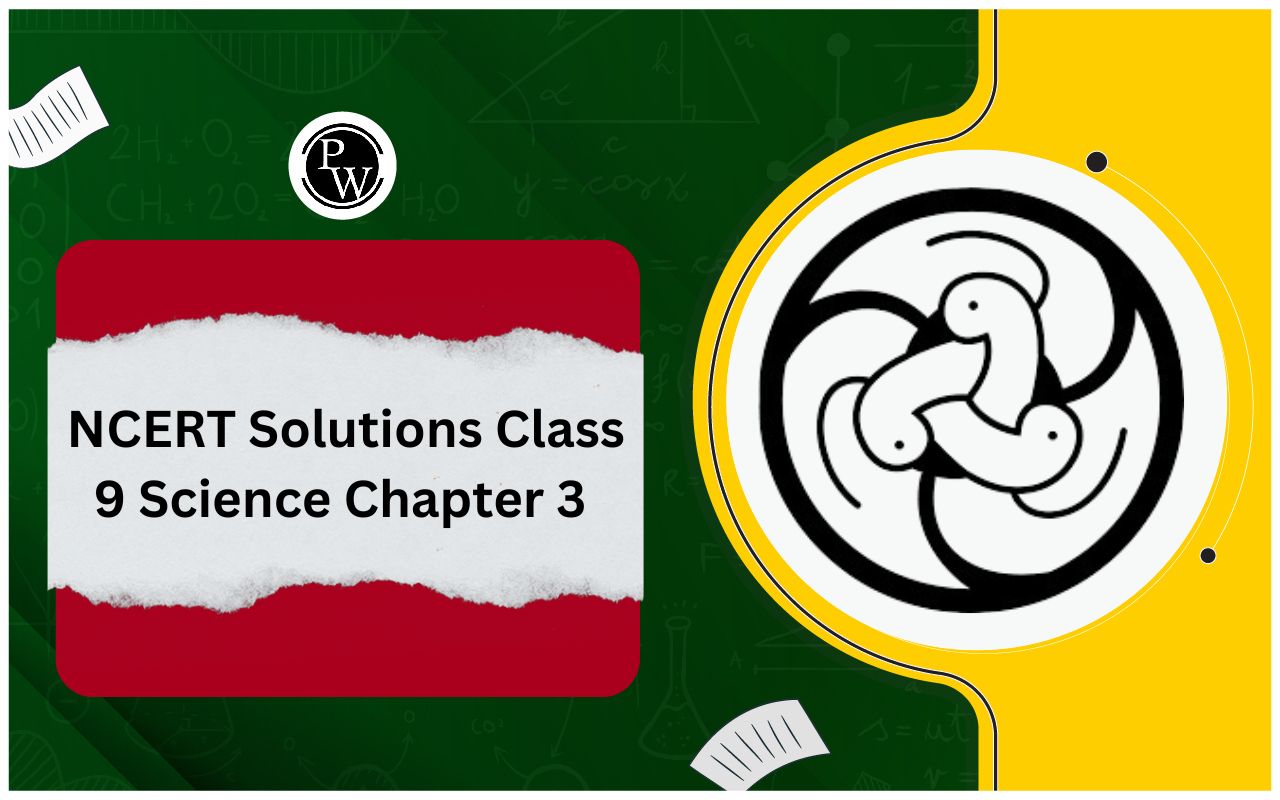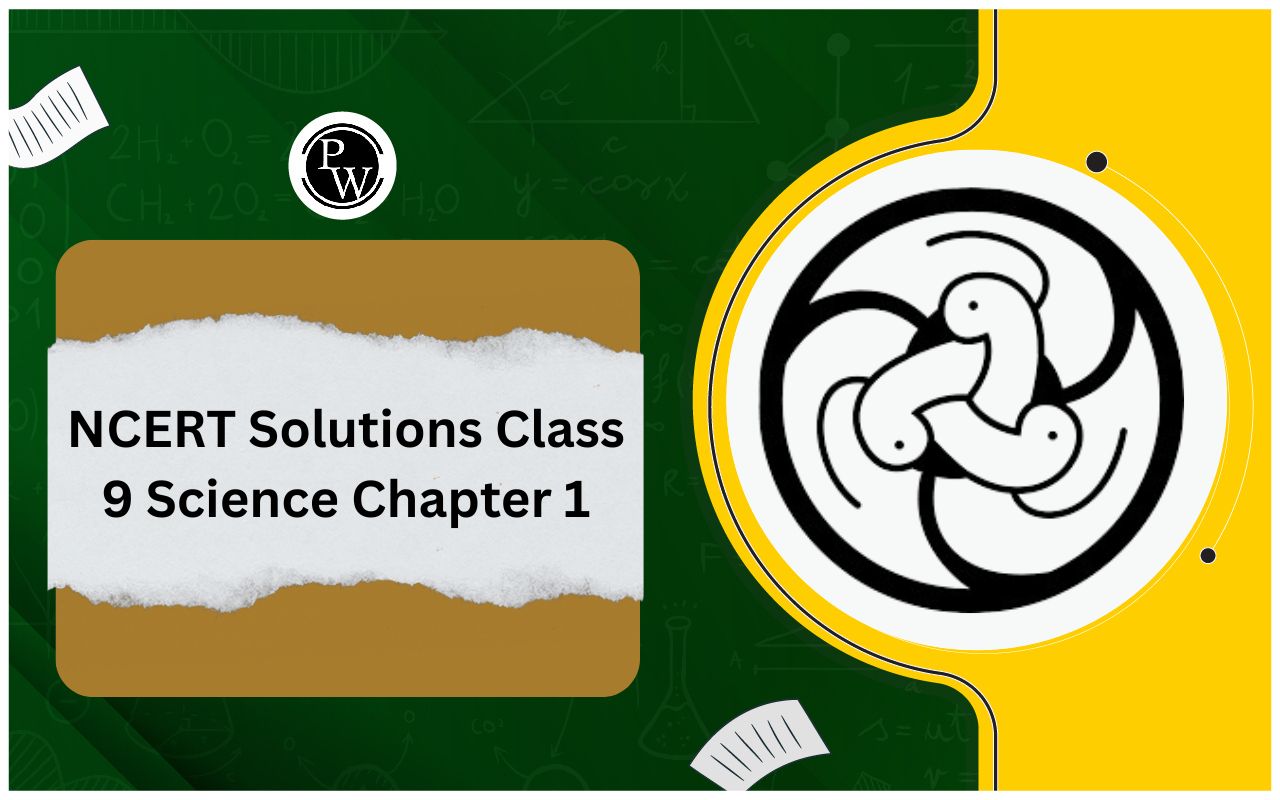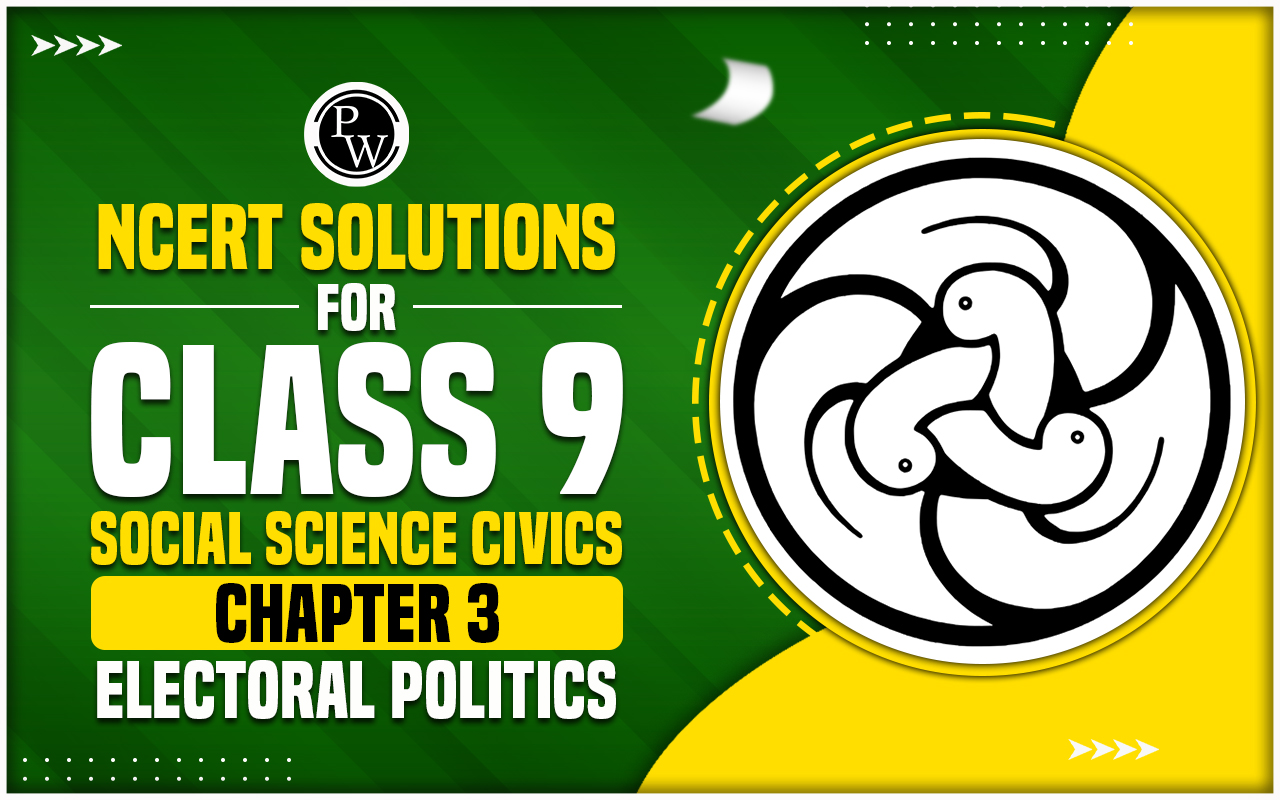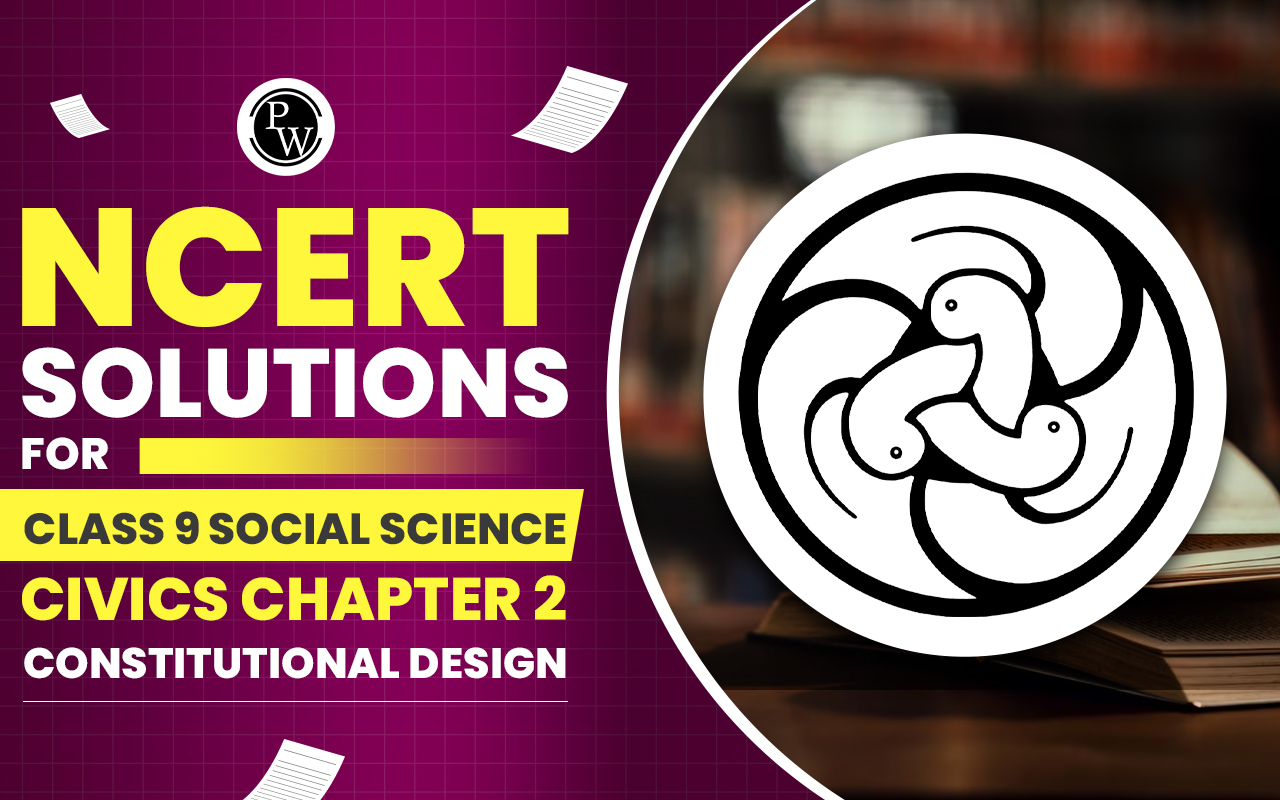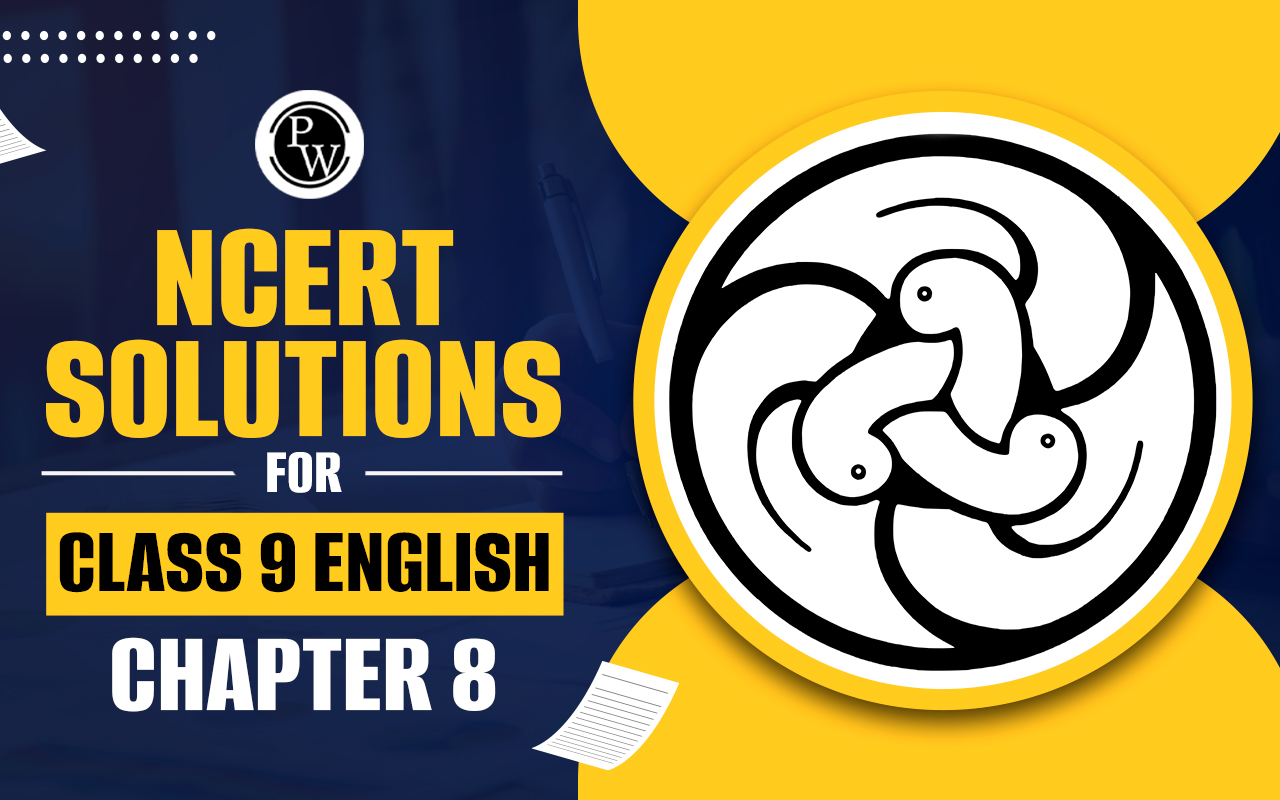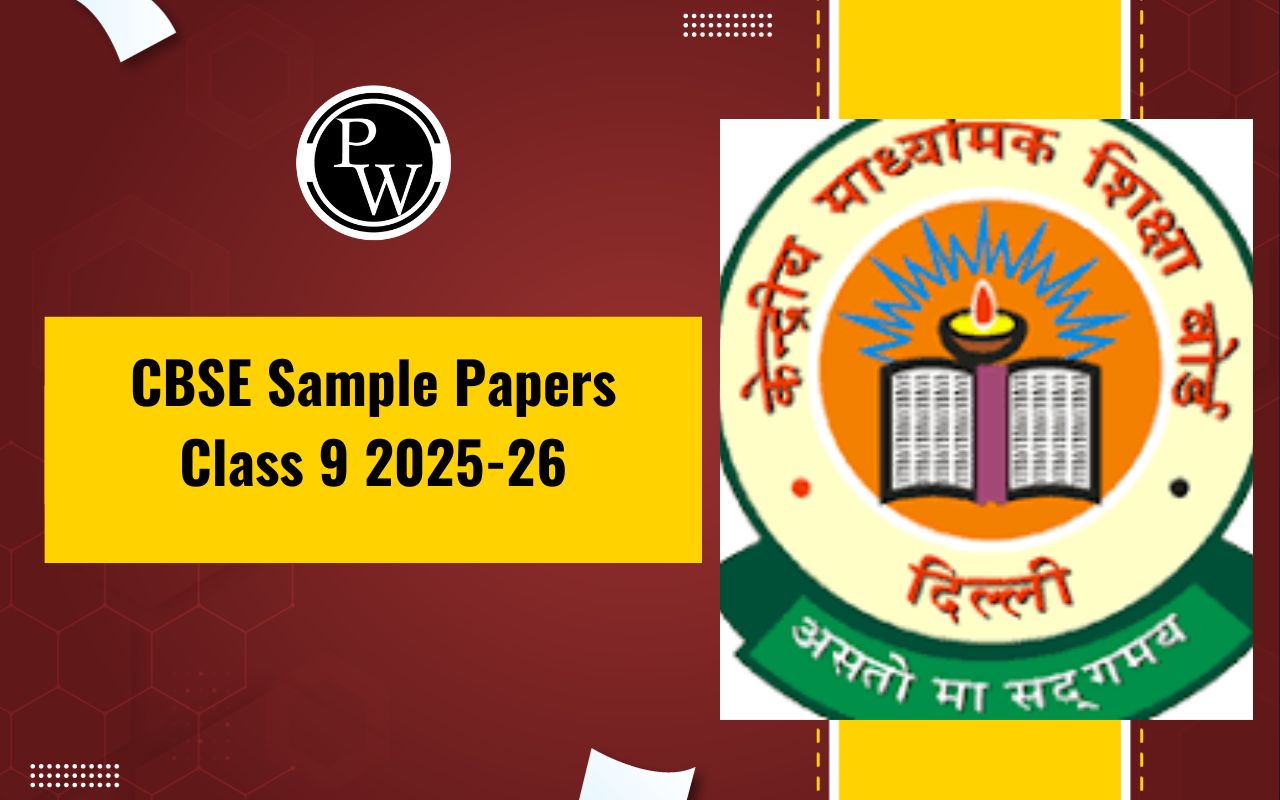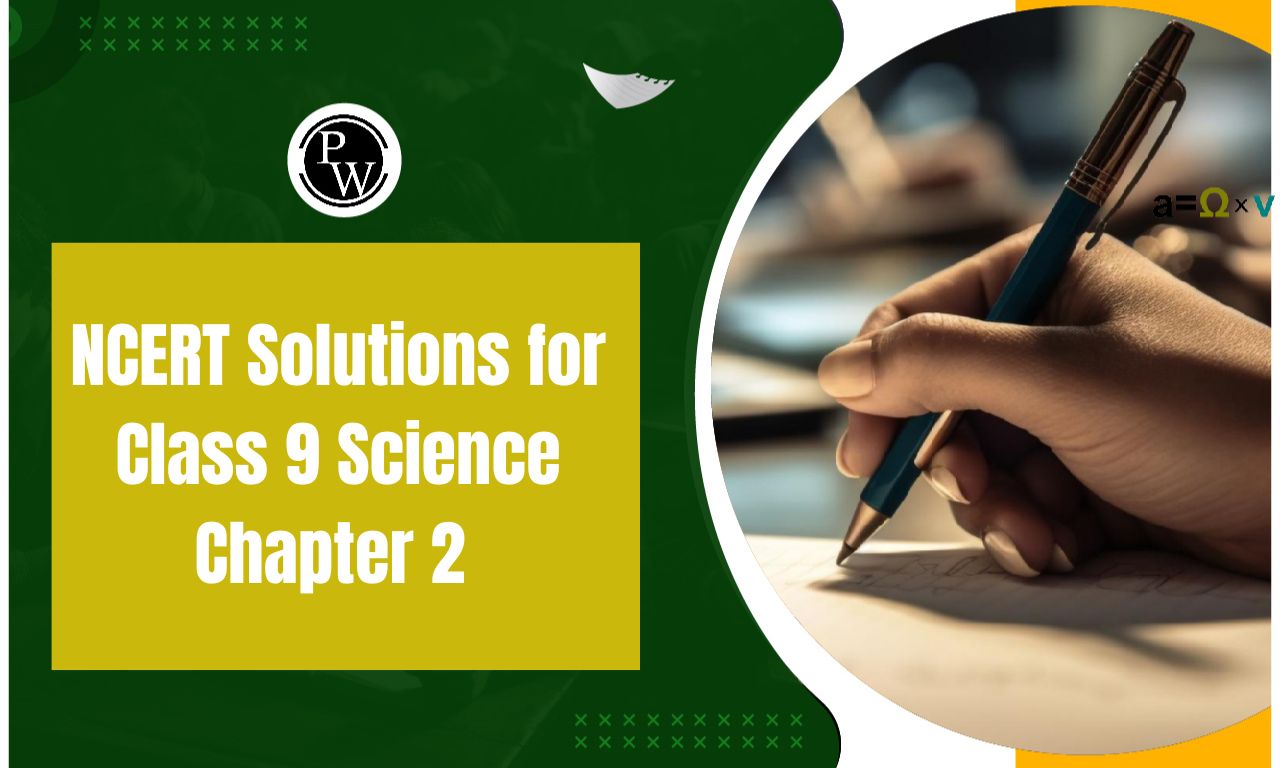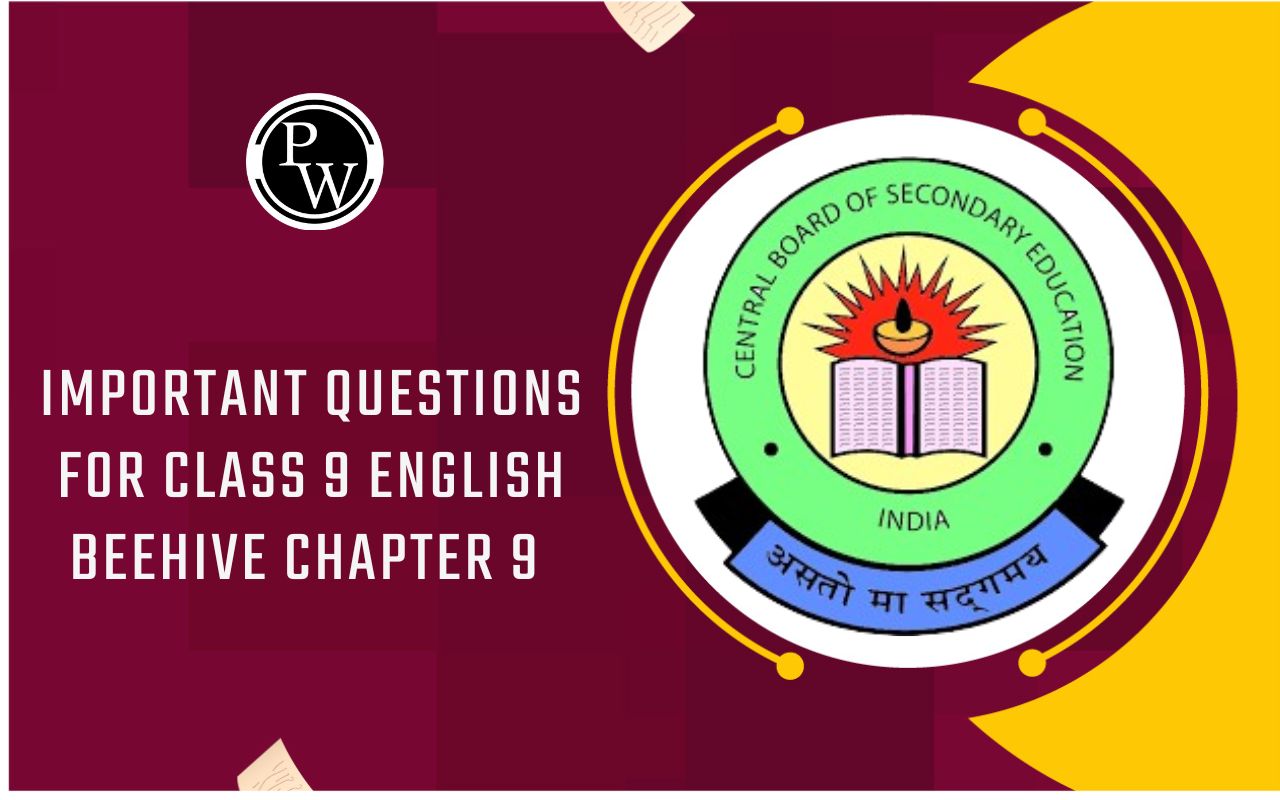
CBSE Sample Papers for Class 9 Social Science 2023-24: Class 9 marks an important stage in a student's academic journey as it lays the foundation for transitioning to Class 10. CBSE Sample Paper for Class 9 Social Science has been designed in accordance with the latest CBSE board guidelines. This resource serves as an important resource for practice before the final examination, offering students an opportunity to enhance their confidence, time management skills, and overall preparation level.
Social Science is all about the study of human relations. This multidisciplinary subject consists of various subjects such as Economics, Political Science, Sociology, History, Archaeology, Anthropology, and Law. For Class 9 students, Social Science is divided into three distinct parts – History, Geography, and Political Science. By solving these CBSE Sample Papers for Class 9 Social Science, students can effectively address their weaker areas, refine their understanding, and fortify their grasp of the subject matter. For the convenience of Class 9 students, CBSE Class 9 Sample papers for various subjects are accessible in one accessible location, ensuring ease of access. This comprehensive approach to exam preparation aids students not only in securing higher scores but also in developing a comprehensive understanding of the examination pattern.CBSE Sample Papers for Class 9 Social Science 2023-24 PDF
As you know, CBSE does not officially release sample papers for class 9th and only provides chapter-wise weightage. We have created these model question papers for class 9 Social Science based on the new marking scheme and blueprint set by CBSE. The Sample Papers for the academic year 2023-24 can be freely downloaded from the Physics Wallah website in PDF format. Alongside the Sample Papers, we are also sharing the CBSE marking scheme and blueprint. This comprehensive resource aids students in addressing the most frequently asked questions and enhances their preparation for the upcoming examinations.Class 9 Social Science Sample Papers 2023-24
The whole model question paper has five sections. The first section has objective-type questions. There are 20 questions in this section. All other sections have subjective-type questions. There are some questions based on maps too. You will also get some case study-based questions in the class 9 social science question paper. This sample question paper and the actual exam question paper will have a similar format. Therefore, you must study the pattern of questions sincerely and practice them as much as possible.CBSE Sample Papers for Class 9 Social Science 2023-24
The entire model question paper is structured into five sections. The initial section comprises objective-type questions, totaling 20 questions. The subsequent sections consist of subjective-type questions, including some based on maps. Additionally, the class 9 Social Science question paper features case study-based questions. It's noteworthy that this sample question paper mirrors the format of the actual exam question paper. Therefore, it is imperative to diligently study the pattern of questions and engage in extensive practice to enhance your preparation for the upcoming examinations.General Instructions:
- Question paper comprises Six Sections – A, B, C, D, E and F. There are 37 questions in the question paper. All questions are compulsory.
- Section A – From question 1 to 20 are MCQs of 1 mark each.
- Section B – Question no. 21 to 24 are Very Short Answer Type Questions, carrying 2 marks each. Answer to each question should not exceed 40 words.
- Section C contains Q.25 to Q.29 are Short Answer Type Questions, carrying 3 marks each. Answer to each question should not exceed 60 words.
- Section D – Question no. 30 to 33 are long answer type questions, carrying 5 marks each. Answer to each question should not exceed 120 words.
- Section-E – Questions no from 34 to 36 are case based questions with three sub questions and are of 4 marks each.
- Section F – Question no. 37 is map based, carrying 5 marks with two parts, 37a from History (2 marks) and 37b from Geography (3 marks).
- There is no overall choice in the question paper. However, an internal choice has been provided in few questions. Only one of the choices in such questions have to be attempted.
- In addition to this, separate instructions are given with each section and question, wherever necessary.
- Note: CBQ stands for “Competency Based Question”. 50% weightage allocated for competency-based questions.
Class 9 Social Science Sample Paper Section A
1. What is the position of women in Saudi Arabia? a) All of these b) Women are given all the rights c) Women are given equal status with men d) Women are subjected to many public restrictions 2. Women generally look after ________. a) Business b) Teaching c) Domestic chores d) Fields Read the given table that shows some important features of PDS in India. Read the data and select the appropriate option from the following.| Name of Scheme | Year of Introduction | Coverage Target Group | Latest Volume | Issue Price (Rs per kg) |
|---|---|---|---|---|
| PDS | Up to 1992 | Universal | - | Wheat (W): 2.34 |
| Rice (R): 2.89 | ||||
| RPDS | 1992 | Backward Blocks | 20 kg of foodgrains | Wheat: 2.80 |
| Rice: 3.77 | ||||
| TDPS | 1997 | Poor and Non-poor BPL APL | 35 kg of foodgrains | BPL - Wheat: 4.15, R: 5.65 |
| APL - Wheat: 6.10, R: 8.30 | ||||
| National Food Security Act | 2013 | Priority Households | 5 kg per person per month | Wheat: 2.00 |
| (NFSA) | Rice: 3.00 | |||
| Coarse Grains: 1.00 |
Assertion (A): The subsistence crisis occurred frequently during the Old Regime.
Reason (R): In Old Regime, the monarch did not have the power to impose taxes.
a) Both A and R are true and R is the correct explanation of A. b) Both A and R are true but R is not the correct explanation of A. c) A is true but R is false. d) A is false but R is true. 7. Tejpal Singh works as a peasant in the village. His income from agricultural production is very less. The money is not enough to sustain his family of six-that includes his wife and four children. His wife- Savita is unemployed and wishes to work for earning extra income. Recently, a new scheme has been launched in the village. Under the scheme, one-third of the proposed jobs have been reserved for women. This scheme helped Savita to get the job in the village. Name the scheme which helped Savita to get a job. a) Mahatma Gandhi National Rural Employment Guarantee Act. b) Antyodaya Anna Yozana c) Pradhan Mantri Gramodaya Yozana d) Swarnajayanti Gram Swarozgar Yojana 8. Who appoints the Governors of various States after consultations with the Chief Minister of the State? a) Speaker b) Prime Minister c) President d) Vice President 9. Read the information given below and select the correct option. Identify the painter who painted the preparatory sketch for a large painting of The Tennis Court Oath which was intended to be hung in the National Assembly. a) Jacques-Louis David b) David c) Le Barbier d) Louis-Leopold Boilly 10. Which of the following is true with reference to voter and the candidate ? A. Anyone who can be a voter can also become a candidate. B. Anyone who can be a voter but has attained the age fo 25 years can become a candidate. a) Both A and B are true b) Both A and B are false c) A is false but B is true d) A is true but B is false 11. When did Zimbabwe attain independence and from whom? a) 1970, from Black minority rule b) 1980, from Americans c) 1980, from White minority rule d) 1880, from White minority rule 12. Arrange the following events in chronological order: The Youth League of the Nazis was founded. Allied victory in Europe. Hitler said: “In my state, the mother is the most important citizen.” Tripartite Pact was signed between Germany, Italy and Japan. a) iv, iii, ii, i b) ii, i, iii, iv c) i, iii, iv, ii d) ii, i, iv, iii13. Read the information given below and select the correct option
A group of several hundred people marched towards the eastern part of the city and stormed the Bastille. In the armed fight that followed, the commander of the Bastille was killed and the prisoners released. The Bastille was hated by all because it stood for the despotic power of the king. The fortress was demolished and its stone fragments were sold in the markets to all those who wished to keep a souvenir of its destruction. With reference to given information choose why was Bastille prison attacked? a) To find hoarded utensils b) All of these c) To find hoarded ammunition d) To find hoarded grains 14. Which of the following freedoms is not available to an Indian citizen ? a) Freedom to oppose certain laws of the Constitution b) Freedom to start a movement to change the government. c) Freedom to participate in armed revolution. d) Freedom to criticize the government 15. From Gujarat to Arunachal Pradesh, there is a time lag of two hours. There is a standard time taken on a place of a state marked as A in the given map. Identify this place from the following options.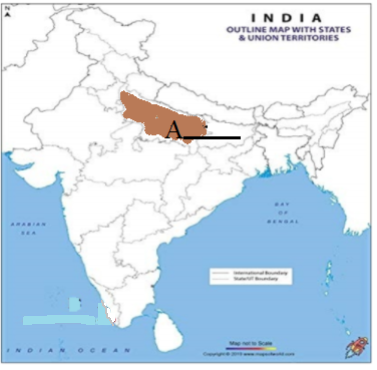 a) Chhattisgarh
b) Madhya Pradesh
c) Uttar Pradesh
d) Uttarakhand
16. An elevated land feature like mountain, upland or hill may separate two drainage basins is known as:
a) Drainage basin
b) Ox bow lake
c) Water divide
d) Tributary
17. Which organization did socialists form to spread the socialist ideas?
a) Fourth International
b) Third International
c) Second International
d) First International
18. In the secondary sector which of the following is the most labour absorbing?
a) Mining
b) Quarrying
c) Trade
d) Small scale manufacturing
19. The southernmost latitude of the Indian mainland?
a) 8 degree 4′ South
b) 6 degree 4′ North
c) 8 degree 4′ North
d) 6 degree 4′ South
a) Chhattisgarh
b) Madhya Pradesh
c) Uttar Pradesh
d) Uttarakhand
16. An elevated land feature like mountain, upland or hill may separate two drainage basins is known as:
a) Drainage basin
b) Ox bow lake
c) Water divide
d) Tributary
17. Which organization did socialists form to spread the socialist ideas?
a) Fourth International
b) Third International
c) Second International
d) First International
18. In the secondary sector which of the following is the most labour absorbing?
a) Mining
b) Quarrying
c) Trade
d) Small scale manufacturing
19. The southernmost latitude of the Indian mainland?
a) 8 degree 4′ South
b) 6 degree 4′ North
c) 8 degree 4′ North
d) 6 degree 4′ South
Class 9 Social Science Sample Paper Section B
20. What are the differences between the Central Highlands and Deccan Plateau? Suggest five steps to eradicate unemployment from society?OR
How do educated women earn at par with their male counterparts? 21. Write any three basic principles of democracy. 22. Explain the different malpractices done by PDS dealers?Class 9 Social Science Sample Paper Section C
23. What is the need for maintaining Buffer Stock? 24. Examine three reasons for the success of the socialist economy in post-revolution Russia.OR
Who were Soviets? What was their role in the revolution? 25. What is the relation between occupational structure and development? 26. Whether the system of elections are democratic or not? Justify. 27. Why are people allowed to go to courts against the government’s decisions?Class 9 Social Science Sample Paper Section D
28. In The Spirit of the Laws, Montesquieu proposed a division of power within the government between the Legislative, the Executive and the Judiciary. Explain the values which can be reflected in this proposal.OR
Which three causes led to the ‘subsistence crisis’ in France during the Old Regime? 29. “Indian monsoon is said to be a unifying bond for the people of the country.” Suppose the monsoon is disturbed for a prolonged period of time. What do you think, how will it affect the country?OR
The Development of tropical cyclones is a distinguishing feature of monsoon. How do tropical cyclones influence the distribution of rainfall in India? 30. What are the objectives of India’s National Policy on Health? Suggest any two ways through which the objectives of the policy can be met.OR
What is unemployment? Name two types of unemployment prevailing in India. What are the disadvantages of unemployment? 31. Why do we accept even today the Constitution made by the Constituent Assembly more than 60 years ago? Explain any three reasons.OR
Explain the terms Justice, Liberty, Equality and Fraternity, written in the preamble of India.Class 9 Social Science Sample Paper Section E
32. Read the text carefully and answer the questions:
‘In an era when the earth is gradually being divided up among states, some of which embrace almost entire continents, we cannot speak of a world power in connection with a formation whose political mother country is limited to the absurd area of five hundred kilometers.’ Hitler, Mein Kampf.- What was Nazi ideology was synonymous with?
- Nazism was a system. Explain.
- Infer Hitler’s imperial ambition.
33. Read the text carefully and answer the questions:
India occupies an important strategic position in South Asia. India has 28 states and Eight Union Territories. India shares its land boundaries with Pakistan and Afghanistan in the northwest, China (Tibet), Nepal and Bhutan in the north, and Myanmar and Bangladesh in the east. Our southern neighbours across the sea consist of the two island countries, namely Sri Lanka and the Maldives. Sri Lanka is separated from India by a narrow channel of sea formed by the Palk Strait and the Gulf of Mannar, while the Maldives Islands are situated to the south of the Lakshadweep Islands. India has had strong geographical and historical links with her neighbours. Before 1947, there were two types of states in India. Provinces were ruled directly by British officials, who were appointed by the Viceroy. Princely states were ruled by local, hereditary rulers, who acknowledged sovereignty in return for local autonomy.-
Analyze the chart and answer the question that follows.
 How were the provinces and states of India set up just before independence?
How were the provinces and states of India set up just before independence?
- Give names of the countries that share land boundary with India.
- Name the water bodies that separate Sri Lanka from India.
34. Read the text carefully and answer the questions:
Poverty in India also has another aspect or dimension. The proportion of poor people is not the same in every state. Although state-level poverty has witnessed a secular decline from the levels of the early seventies, the success rate of reducing poverty varies from state to state. Recent estimates show while all India Head Count Ratio (HCR) was 21.9 percent in 2011-12 states like Madhya Pradesh, Assam, Uttar Pradesh, Bihar and Odisha had above all India poverty level. Bihar and Odisha continue to be the two poorest states with poverty ratios of 33.7 and 32.6 percent respectively. Along with rural poverty, urban poverty is also high in Odisha, Madhya Pradesh, Bihar, and Uttar Pradesh. In comparison, there has been a significant decline in poverty in Kerala, Maharashtra, Andhra Pradesh, Tamil Nadu, Gujarat and West Bengal. States like Punjab and Haryana have traditionally succeeded in reducing poverty with the help of high agricultural growth rates. Kerala has focused more on human resource development. In West Bengal, land reform measures have helped in reducing poverty. In Andhra Pradesh and Tamil Nadu, the public distribution of food grains could have been responsible for the improvement.- What state has the highest rate of poverty among Bihar, Odisha, Punjab, and Assam?
- Is it accurate to say that Kerala has eradicated poverty through the distribution of food at highly subsidized rates?
- In which Indian states is poverty most prevalent?
Class 9 Social Science Sample Paper Section F
35. Two places A and B have been marked on the given outline map of the world. Identify then and write their correct names on the lines drawn near them Epicenters of main panic movement Allied country of first world war On the outline map of India locate and label ANY THREE of the following with suitable Symbols. The state has the highest density of population Tropical Deciduous Forest – Vegetation Type Manas – National Park Eastern Ghats – Mountain RangesBenefits of CBSE Sample Papers for Class 9 Social Science
CBSE Sample Papers for Class 9 Social Science offer numerous benefits to students preparing for their exams. Here are some key advantages:Familiarity with Exam Pattern: Sample papers provide insight into the exam pattern, question distribution, and marking scheme. Students become familiar with the structure of the actual question paper.
Understanding Marking Scheme: By solving sample papers, students comprehend the weightage assigned to different topics and question types. This understanding helps them allocate their time and efforts effectively during the actual exam.
Practice of Different Question Types: Sample papers include various types of questions, including objective, subjective, and map-based questions. This diverse practice helps students tackle different question formats with confidence.
Self-Assessment: After solving sample papers, students can evaluate their performance. This self-assessment helps identify strengths and weaknesses, enabling focused revision in specific areas.
Time Management: Regular practice with sample papers enhances time management skills. Students learn to allocate time wisely for each section, ensuring that they complete the entire paper within the stipulated time frame.
Improvement in Writing Skills: Writing answers within the given word limit and structure is crucial. Sample papers assist students in developing concise and well-structured responses, improving their writing skills.
| Related Links | |
| CBSE Class 10 Maths Sample Paper 2023-24 | CBSE Class 10 Social Science Sample Paper 2023-24 |
| CBSE Sample Paper for Class 10 English 2023-24 | CBSE Class 10 Science Sample Paper 2023-24 |
CBSE Sample Papers for Class 9 Social Science FAQs
Where can I find CBSE Sample Papers for Class 9 Social Science?
How can CBSE Sample Papers benefit Class 9 students in Social Science?
Are CBSE Sample Papers for Class 9 Social Science available for free?
Can I rely on CBSE Sample Papers as the sole resource for exam preparation?
Are CBSE Sample Papers designed based on the latest syllabus and exam pattern?

